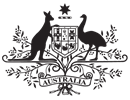It is my pleasure to present the report A time for change: yes/no? Inquiry into the machinery of referendums. This is the fourth report of the committee for this parliament.
It is my pleasure to present the report A time for change: yes/no? Inquiry into the machinery of referendums. This is the fourth report of the committee for this parliament.
It is over a decade since Australia last held a referendum, over thirty years since there was a successful referendum to change the Constitution, and it is nearly a century since the introduction of the yes/no pamphlet as the principal means of informing voters in a referendum. This inquiry concerned the machinery of referendumsprincipally how voters are engaged in a referendum and how the yes/no cases are communicated. There have been many changes in effective communication methods over the last century, and yet our method of communicating to voters during a referendum has remained relatively unchanged over this time.
In 1912, when the requirement was introduced for a pamphlet outlining the yes/no cases for constitutional change, it was considered an innovative development in the way in which the government communicated with electors. In todays array of communication technologies and expectations of public debate, we could hardly see such a pamphlet as innovative. Nearly a century later, it is appropriate to ask whether there is a more effective way of informing and engaging the Australian public about proposed constitutional change.
The requirement for constitutional change is rightly set high. Section 128 of the Constitution requires that a majority of electors in a majority of states approve of the proposal. It is therefore critical that electors understand the proposal being put to them so that they can make an informed decision at a referendum. It is also clear that a lack of understanding plays a significant part in an electors decision to vote no. Indeed, the 1999 republic referendum campaign demonstrated this plainly with the Dont know; vote no slogan against change. It is the view of the committee that, while the distribution of a yes/no pamphlet has provided a reasonable starting point for communicating with voters, it is the minimum of what might be needed and is no longer appropriate or adequate as the sole material provided to electors.
As such, the committee has made 17 recommendations to improve the referendum process. These innovations recognise that in the 21st century a range of communication approaches are required to inform and engage with voters. First, the committee recommends amendments to the act to require that a yes/no pamphlet is posted to every household rather than each elector. This change has been long supported by the Australian Electoral Commission. Additionally the current restriction on the word limit of the yes/no arguments should be removed from the act. It was agreed that parliamentarians should continue to authorise the yes/no arguments. Parliamentarians are elected representatives and are responsible and accountable to the Australian people. It is appropriate that they retain responsibility for authorising the official yes/no arguments.
In seeking to provide a more flexible and adaptable approach, the committee has recommended that a referendum panel be established for each referendum. The panel would be responsible for promoting the referendum and educating voters regarding the arguments. This would include determining the word limit of the yes/no pamphlet, as well as providing background material to electors on the referendum proposal.
These changes mean that there would be more than one way to communicate with electors before a referendum. The yes/no pamphlet would continue to be provided to electors and this would serve as a guaranteed minimum for referendum material. However, additional material, using a range of communication technologies, could be more effectively targeted to different groups of electors. The panel would comprise a maximum of eight persons, and should include a representative of the Australian Electoral Commission. The method of appointment to the panel should ensure independence and bipartisanship, and the government would determine the budget for the panel.
Further, it is clear that many Australians are not familiar with the Constitution. The committee has recommended that the Australian government develop and implement a national civics education program to enhance the engagement of the public in democratic processes and to improve knowledge and understanding of the Constitution. The title of this report is A time for change: yes/no? The report concerns the opportunity to change our Constitution. It does not promote change but acts to ensure that the opportunity for change is fair and represents the informed views of voters. We can and should do better in educating and engaging voters in the referendum process and so, yes, it is time to change the machinery we use for referendums.
I thank those who participated in committee hearings and roundtables and provided submissions to the inquiry. I also thank the secretariat for their work. And finally I thank the other members of the committee for their dedication and contribution to the inquiry. In particular I thank the inquiry secretary, Serica Mackay and research officer Angela Arundell, and also Anna Dacre, Sharon Bryant, Claire Young and Ozi Kosemehmetoglu.



